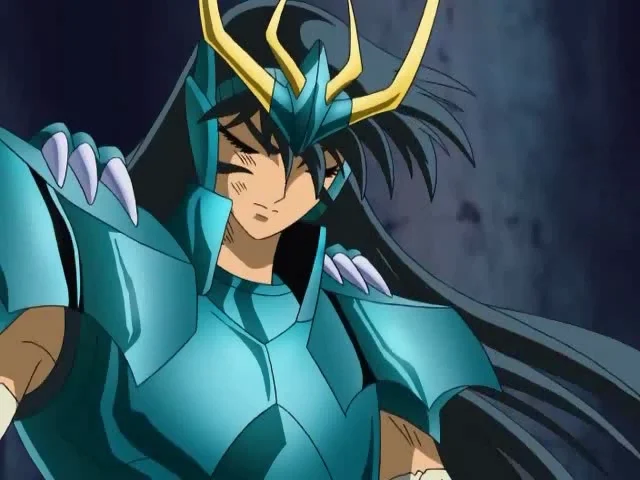“Saint Seiya” incorporates minor references to Chinese mythology within its predominantly Greek-inspired narrative.
Notable allusions include Shiryu, a Bronze Saint aligned with the Dragon Constellation, echoing the revered Chinese dragon. The Five Old Peaks in the Rozan Mountains parallel China’s Five Sacred Mountains. Roshi, a master residing in these peaks, evokes Chinese martial arts traditions. Additionally, the Hydrus Scale worn by Isaac of Kraken symbolizes the Chinese “Qiānniú,” the Heavenly Bull.
The Auriga Cloth and Capella reference the Chinese tale of Niu Lang and Zhi Nu, while Chi Draconis star and the Milky Way hint at Chinese celestial lore. Check greek mythology references in Saint Seiya.
Though Greek mythology remains dominant, these subtle Chinese mythology elements contribute cultural diversity to the “Saint Seiya” universe.
Chinese Mythology References in Saint Seiya
While the series predominantly features elements from Greek mythology, it does incorporate some references to Chinese mythology as well.
Here are some of the main Chinese mythology references in “Saint Seiya”:
- Shiryu and the Dragon Constellation (Long): Shiryu, one of the main protagonists and Bronze Saints, is associated with the Dragon Constellation in the series. The dragon motif is reminiscent of the Chinese dragon, which is a powerful and revered creature in Chinese mythology.
- The Rozan Mountains: The Five Old Peaks (Wuzhishan) in the Rozan Mountains are a direct reference to the Five Sacred Mountains of China. Each peak is named after a direction: Mount Xuanzang (North), Mount Choushin (South), Mount Gensei (East), Mount Chikyu (Center), and Mount Kintou (West).
- The Dragon’s Blood Cloth: In the “Saint Seiya: Episode G” manga spin-off, Shiryu’s Cloth is called the “Dragon’s Blood Cloth.” This name may allude to Chinese legends about dragons possessing potent blood with mystical properties.
- Nio Guardians: In the “Saint Seiya: Episode G” spin-off, the Nio Guardians are introduced as protectors of Sanctuary entrances. These guardians are inspired by the traditional Niō statues seen at the entrances of Buddhist temples in Japan, which themselves have origins in Chinese guardian figures.
- Star Names and Constellations: While “Saint Seiya” predominantly focuses on Greek constellations, some Chinese constellations and star names appear in the series, indicating a mix of cultural influences.
It’s important to note that while these references exist in “Saint Seiya,” the series predominantly draws from Greek mythology and astrology for its characters, storylines, and overall universe.
Chinese mythology is only a minor aspect of the series’ mythological tapestry. Click here to know about the Hinduism references in Saint Seiya.
1. Shiryu and the Dragon Constellation
The intertwining of Shiryu’s character with the concept of the dragon adds depth to his role, infusing it with cultural significance beyond the series’ primary Greek mythological focus.
In “Saint Seiya,” Shiryu, a prominent Bronze Saint, is linked to the Dragon Constellation (Long). This connection draws upon the iconic imagery of the Chinese dragon, a revered and potent entity in Chinese mythology. Shiryu’s association with the dragon motif echoes the majestic and powerful qualities attributed to the Chinese dragon.
The incorporation of the Chinese dragon motif pays homage to the rich mythological tapestry that “Saint Seiya” weaves, showcasing a fusion of diverse cultural influences within its universe. Click here to read the Alchemy references in Saint Seiya.
2. The Rozan Mountains
By intertwining elements from both Greek and Chinese mythologies, “Saint Seiya” showcases a diverse range of influences, enriching its narrative world with a tapestry of global legends and symbolism.
The Rozan Mountains in “Saint Seiya” pay homage to Chinese mythology’s Five Sacred Mountains (Wuzhishan). This connection is evident in the naming and symbolism of the Five Old Peaks within Rozan.
Each peak corresponds to a cardinal direction: Mount Xuanzang (North), Mount Choushin (South), Mount Gensei (East), Mount Chikyu (Center), and Mount Kintou (West).
These names mirror the arrangement of the Five Sacred Mountains in Chinese tradition. This reference not only acknowledges the revered status of the Five Sacred Mountains but also serves to infuse the series with a touch of Chinese cultural significance.
In the Rozan Mountains rests Dohko, Shiryu’s master. Click here to know why he’s so small in purple.
3. The Dragon’s Blood Cloth
By naming Shiryu’s Cloth as the “Dragon’s Blood Cloth,” the creators of “Saint Seiya” may be alluding to chinese mythical attributes.
In the manga spin-off “Saint Seiya: Episode G,” Shiryu’s Cloth is named the “Dragon’s Blood Cloth.” Dragon’s Blood Cloth possibly draws inspiration from Chinese mythology, where dragons are believed to possess potent blood with mystical qualities. In Chinese folklore, dragon’s blood is often associated with healing and magical properties.
This reference bridges the series’ Greek-centered mythology with the broader scope of global legends, highlighting the interconnectedness of various cultural beliefs.
The name not only enriches Shiryu’s character and Cloth but also serves as a nod to the rich and diverse world of mythological inspiration that the “Saint Seiya” universe embodies.
4. Nio Guardians
These imposing figures symbolize the guardians of the four cardinal directions, offering protection against evil spirits.
In the “Saint Seiya: Episode G” spin-off, the Nio Guardians play a role as protectors of Sanctuary entrances. These guardians draw inspiration from the traditional Niō statues that stand at the entrances of Buddhist temples in Japan. These statues, in turn, trace their origins to ancient Chinese guardian figures, known as “Nio” in Japanese and “Nílù” in Chinese.
In “Saint Seiya,” the Nio Guardians’ incorporation highlights the series’ intercultural blend, as they pay homage to both Japanese and Chinese traditions.
This reference adds a layer of authenticity to the series’ mythological and cultural universe, showcasing the creators’ attention to diverse mythological and artistic influences.
5. Chinese Constellations
“Saint Seiya,” primarily centered on Greek constellations, also incorporates elements of Chinese mythology by referencing certain Chinese constellations and star names.
Examples of chinese constellations in Saint Seiya include the Hydrus Scale worn by Isaac of Kraken, paralleling the Chinese Heavenly Bull, and the star Chi Draconis associated with Shiryu’s Dragon Cloth.
This blend of cultural influences enriches the series’ cosmology. While the characters and plot are rooted in Greek mythos, nods to Chinese celestial lore add diversity.
These subtle inclusions underscore the creators’ intent to weave a tapestry of global myths, making “Saint Seiya” a unique amalgamation of various mythological traditions that extend beyond its Greek foundation.

